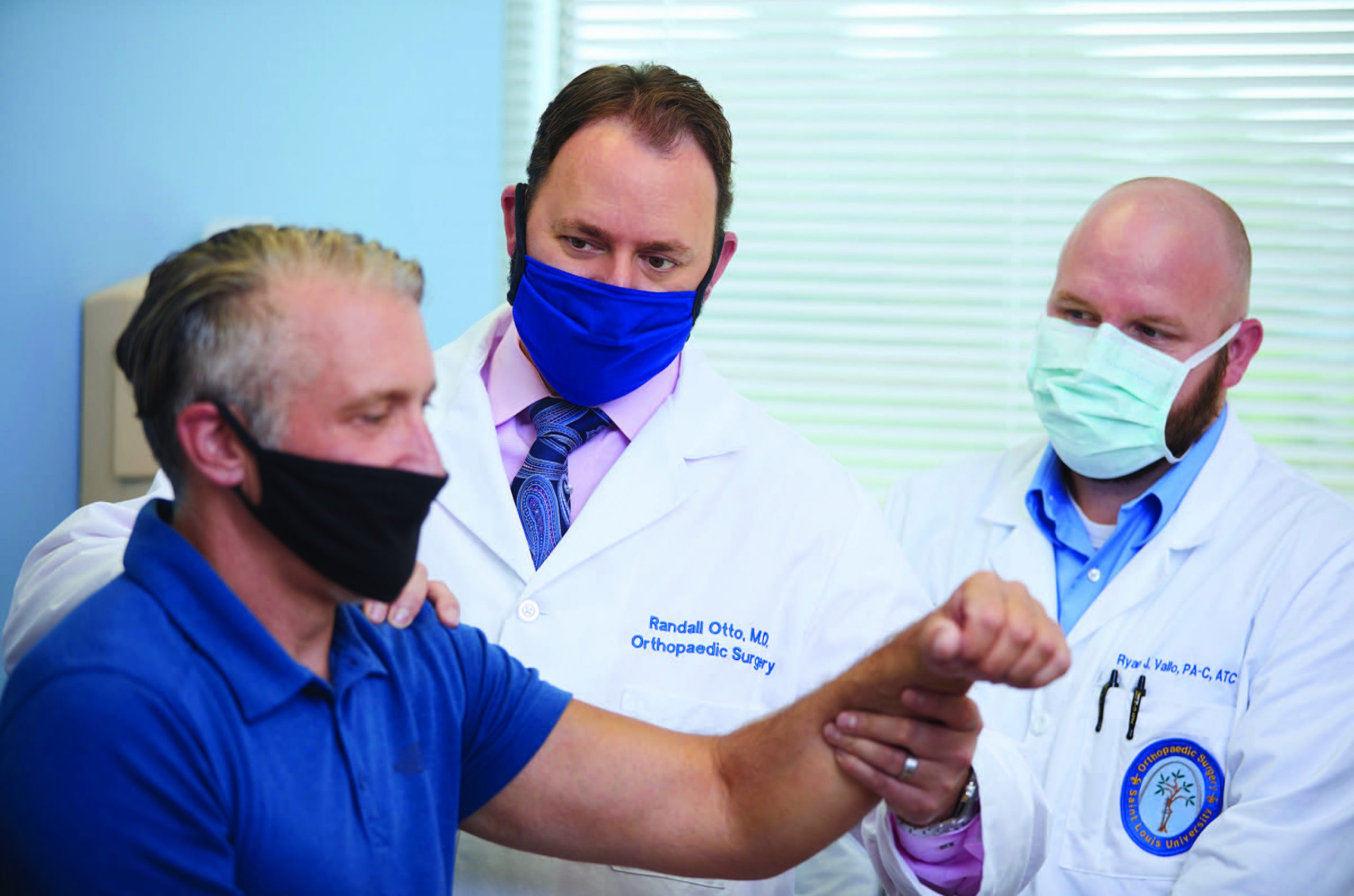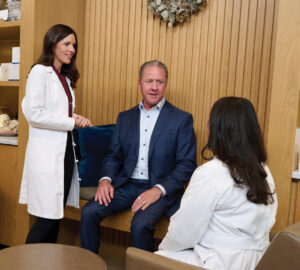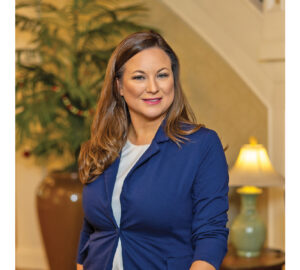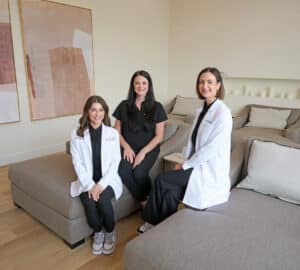You probably don’t think much about your shoulder or elbow joints as you go about your day. But when they start to hurt, it quickly becomes obvious how important they are to your physical health and daily functioning. Dr. Randall Otto, a SLUCare orthopedic surgeon at SSM Health St. Clare Hospital, says there are a number of reasons a patient may need shoulder or elbow treatment, and his practice is equipped to provide a complete cycle of care.
“We can help patients of almost any age who have problems with these joints,” he explains. “They might be suffering from injuries, arthritis, wear and tear or other conditions.” Shoulder replacements, rotator cuff repairs and revisions of previous surgeries are among the most common procedures Otto performs. (The rotator cuff is a group of muscles and tendons that keep your upper arm bone seated in your shoulder socket.) Otto practices in the newly renovated SLUCare Orthopedics office at the St. Francis Building on the St. Clare campus. He says the facility is uniquely set up for state-of-the-art care.
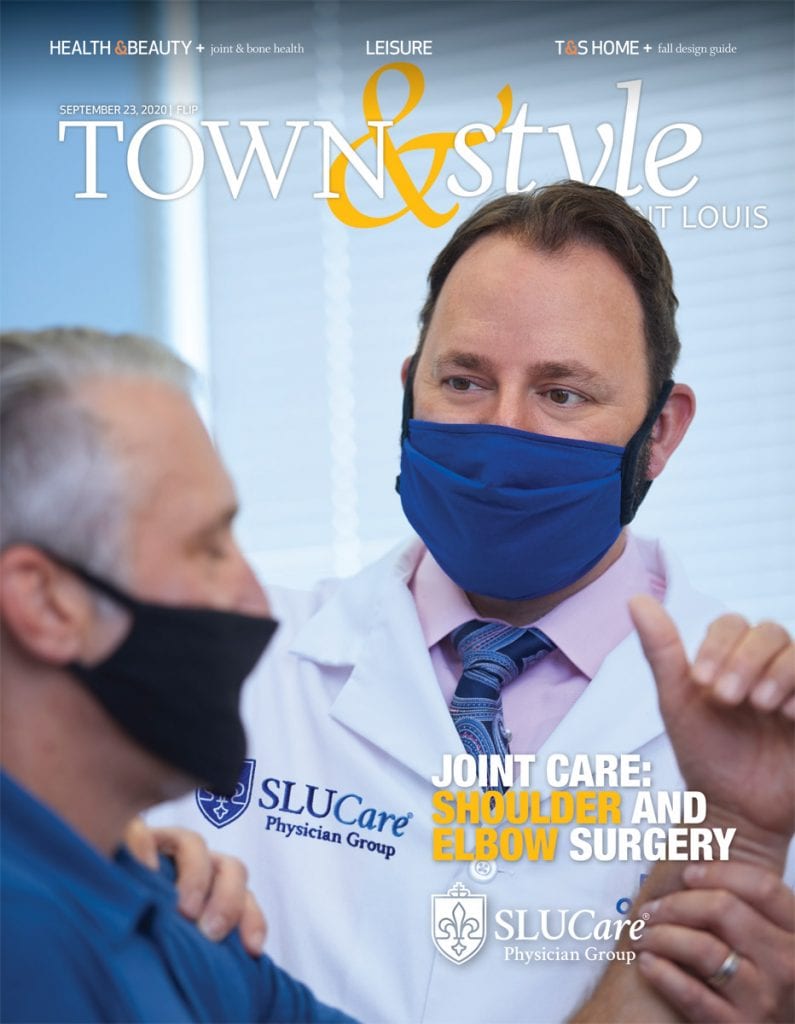
One of the first questions he asks a shoulder or elbow patient is, “What is your biggest concern, pain or function?” Many people state that both are an issue, and many experience significant nighttime discomfort that interrupts their sleep. Sometimes, joint problems can be managed with a combination of medication, cortisone injections, exercise or physical therapy, but at other times surgery is needed to relieve symptoms. Some joint conditions progress rapidly, and others take years to reach the point where treatment is necessary.
Otto says patients with serious shoulder pain often require surgery to replace diseased bone with artificial implants and repair damaged joint tissue. Depending on the person’s needs, surgeons can perform a couple of different types of shoulder replacements. “When tissues have broken down and other types of therapy haven’t worked, we often can use metal or plastic implants to repair the joint,” he notes. “We also can perform arthroscopic surgery in cases of injury or other problems.”
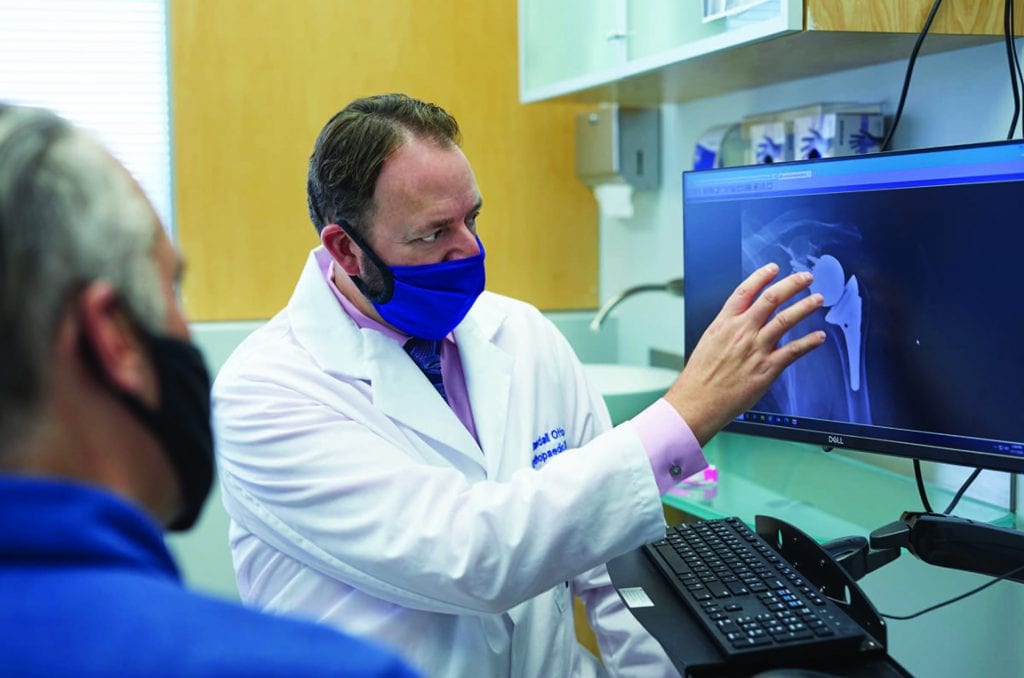
Patient Jim H. says severe pain from advanced arthritis spurred him to schedule double shoulder replacement surgeries with Dr. Otto. The procedures were performed a few months apart so the patient would have one stronger shoulder to use while the other was healing.
Jim says the decision to undergo the procedures changed his life for the better, and the experience taught him the importance of working with a compassionate, knowledgeable surgeon. “Before my operations, the pain was so bad that I couldn’t lift either of my arms higher than shoulder level,” he says. “I had tried conservative management, but that didn’t work well for me, so I consulted with Dr. Otto. I was impressed with his knowledge and personality as soon as I met him. I also liked the way he carefully explained how he would perform my procedures, and the fact that I could do post-surgery rehabilitation exercises at home. That was very convenient for me.”
Several months after his second surgery, Jim was back to bowling, swimming and swinging a golf club and says he now feels like there is nothing he can’t do. He appreciates the ability to perform simple tasks that weren’t possible before, like changing an overhead light bulb or working on home projects. “I highly recommend Dr. Otto,” he says. “He is an asset to St. Louis.”
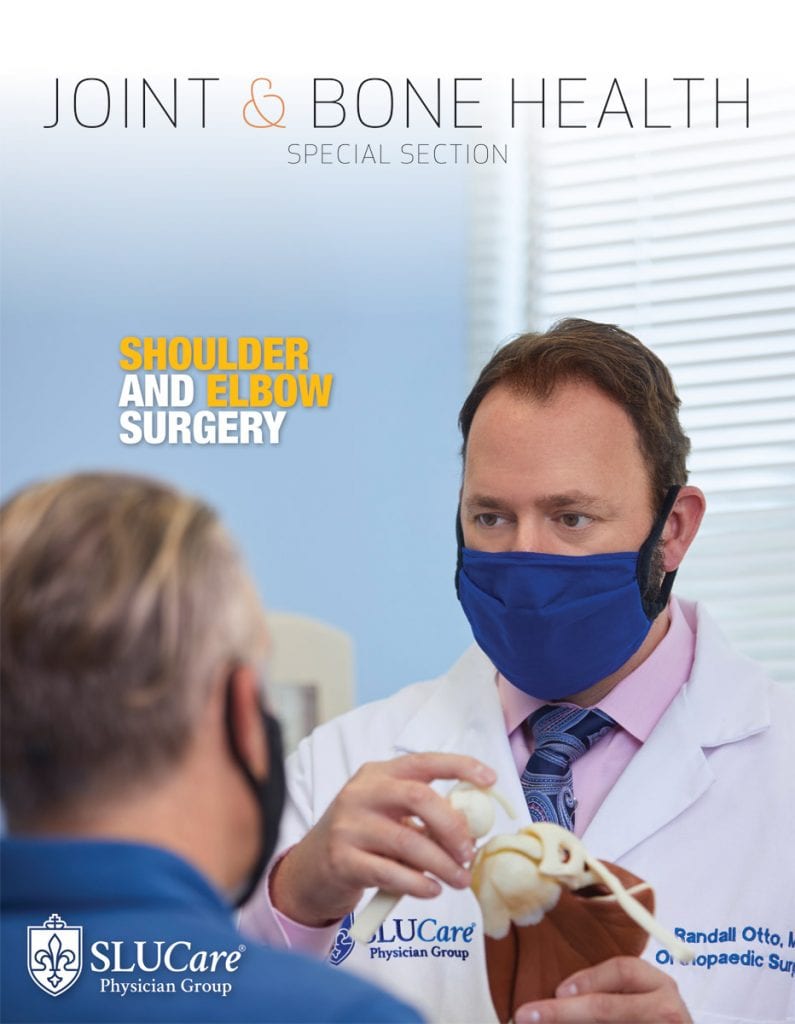
Otto says shoulder replacement surgery is very manageable for patients, but it does require commitment and adherence to some important guidelines. Most people can return home the day after the procedure, and younger adults sometimes can go home the same day.
“First, recovering patients undergo a six-week period of rest so the bone and soft tissue can heal,” he notes. “During that time, they need to avoid lifting most objects and actively raising their arms. At six weeks out, they can do some light activities and stretching but still need to stay away from lifting. By three months, the surgical site should be healed, and the patient can increase activity levels incrementally while rebuilding strength and range of motion. And at six months or more, the person can return to most vigorous activities.” Otto adds that most patients don’t require formal physical therapy in recovery; he coaches them about what exercises to do and when.
He says the practice’s proven therapies bring a high level of patient satisfaction and peace of mind. “Normal function means different things to different people,” he explains. “For some, it means being able to do daily activities like dressing, cooking and bathing, and for others it means playing active sports. As a physician, you have to look at each patient individually, find out what limitations the condition is causing, perform diagnostics and design an individualized plan to return the person to a positive quality of life.”
Orthopedic surgeon Dr. Randall Otto practices at the SLUCare Orthopedics office at SSM Health St. Clare Hospital in Fenton. The practice, located in the St. Francis Building at 1011 Bowles Ave., Ste. 400., provides comprehensive services for patients with shoulder and elbow conditions. Pictured on the cover: Dr. Otto works with a patient. For more information, call 314.977.4440 or visit slucare.edu/orthopedic-surgery.
Cover designs by Julie Streiler
Cover photos courtesy of SLUCare Physician Group
Pictured at top: Dr. Randall Otto and certified physician assistant Ryan Vallo with a patient
Photos courtesy of SLUCare Physician Group





